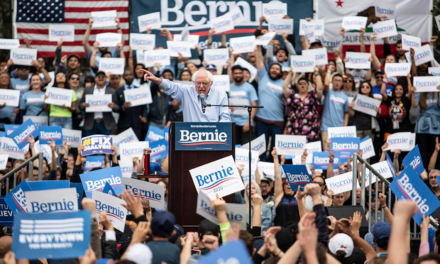
The Iowa Mess and the Internal Workings of a Caucus

Reno Gazette Journal February 9, 2020
The 2020 Presidential primary season kicked off with the first-in-the-nation Iowa caucus. The days long, massive delay by the Iowa Democrat Party has brought to light the challenges in organizing a caucus. As the first Vice Chairman of Washoe County Republican Party (WCRP) in 2012, I was part of the core team that was instrumental in organizing the 2012 Presidential caucus for the Republican party in Washoe county. We organized a picture-perfect caucus and were the first county in Nevada to announce the results. We did it all with a volunteer force that didn’t get paid a single dime. This column is intended to shed light on the challenges in organizing a successful caucus.
For starters, there are significant differences between a caucus and a primary. A primary is organized by the Secretary of State in coordination with the Registrar of Voters in the counties. A caucus is organized by the party. In other words, a primary is run by hundreds of full-time year-round employees, while a caucus is run by volunteers who donate their time and skills. Additionally, county and state parties have elections every two years, which essentially means there will be little continuity from one presidential cycle to the next.
Putting together a caucus takes over a year of planning. It starts with excellent leadership. In 2012, Dave Buell was the WCRP Chairman and he led by example. We set out to assemble an A-team. We recruited Orrin Johnson (you may recall he wrote this Sunday column before me) to spearhead the effort. Orrin is a talented, intelligent and organized leader. Dave, Orrin and I all had extensive backgrounds in management which allowed us to plan and execute the process to perfection. The next task is to recruit the location coordinators (who are responsible for decision-making at the locations, managing everything including registration, ballot security and counting of votes), secure about 25 caucus locations from Incline Village to Gerlach and everything in between, recruit about 20-30 volunteers for each location, assemble a communications team to respond to media requests, print ballots, get the message out about the caucus locations, build a caucus website, assign all voters to reasonably close locations, communicate to voters their caucus locations, and perform a long list of other tasks.
A successful caucus requires everything to go right. The voter list has to be clean. Based on their precinct, participants have to go to a specific location at a set time. Go to the wrong location or show up half hour late, and you lose your chance to vote. Caucus voting takes place in the precinct. Once the precinct meeting is adjourned, the envelope for that precinct with the ballots is sealed and no one can open that envelope until they count the ballots in the presence of the candidates’ representatives. Most caucus participants don’t understand the process, resulting in frustration.
One final point: Where the Iowa Democrat Party failed, Nevada Democrat Party must succeed. We currently have the first-in-the-west caucus. Nevada has an opportunity to cement our place in line and potentially move up in the schedule, thanks to Iowa’s failure. I want the Nevada Democrat Party to succeed as that will enhance our standing in the primary/caucus schedule. We will return to partisan politics in my next column, but for now, it is state over party. NV Dems, do it right! Cement our place as an early primary/caucus state and make our state proud.






























Recent Comments